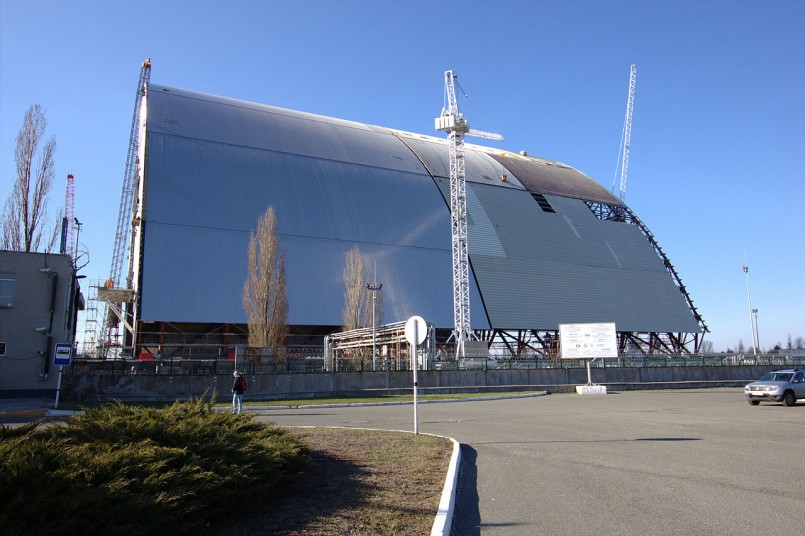Environment
Is it possible to contain Chernobyl?

Image: Wiki Commons
Even if you weren’t around to remember Chernobyl, you’ll probably recognize what it is. It has reached levels in our public lexicon that’s synonymous with a complete catastrophe of epic proportions, a very worst-case scenario. It has been three decades since the cataclysmic nuclear reactor explosion, and the new edifice to cover the destroyed Chernobyl reactor is finally nearing completion.
The project is essentially a giant tomb to contain the Chernobyl reactor, a $2 billion project that started in 2010. The site still contains radioactive materials, ever since reactor 4 blew in 1986. Even now, the confinement structure should be done by the end of 2017.
The structure is a true behemoth: 328 feet high and 541 feet long. It weighs 30,000 tons. And it should protect the environment from the Chernobyl rector for the next 100 years, at least. Donations to help pay for this edifice come from a fund set up to handle the problem that was established in 1997. Donors include over 40 countries, from Iceland to India to Saudi Arabia.
A less-than-stellar cleanup
“So why the heck did it take so long to properly contain this thing?” you might ask. At first the Soviet Union decided to handle the Chernobyl cleanup by itself. A shelter was built in about six months in mid-1986 to cover reactor 4. It was built to prevent the release of radionuclides into the environment and was a rushed job completed under hazardous, radioactive conditions.
To clean up surrounding contamination, about 200,000 people from the Soviet Union called “liquidators” handled cleanup for the first year. They were all exposed to very high levels of radiation, of course. Some received radiation exposure more than 100 times the safety limit and quickly died.
It wasn’t until the Soviet Union was about to break apart that it decided to finally source outside help. The United Nations got involved, and from 1990 to 1991, experts examined the area.
In 1992, Ukraine’s government held a design competition and sifted through 394 entries. Fast forward to 2007, and the contract was awarded to Vinci Construction Grands Projets and Bouygues Travaux Publics in a 50/50 partnership with French consortium Novarka.
The new safe confinement
Since the old shelter was built so hastily that the new confinement shelter was long coming. It was supposed to be finished in 2005, but delays pushed it back until a 2010 start. It was also supposed to be completed in 2013, but still more delays pushed it back to 2017.
Rather than just hold back radioactive gasses, which most containment buildings do, the new structure is geared for holding back solid waste from the environment. Hence the name “confinement,” instead of the more traditional “containment” term that relates to gasses.
The current shelter is supported by structurally unsound components of the damaged reactor. It has been considered to be only moderately successful at keeping the radioactive components contained. It was never considered to be a permanent solution, and its continued deterioration has made radioactive leaks into the environment a constant threat.
The new confinement structure for Chernobyl is a steel, arch-shaped edifice. It’s designed to, of course, contain the radioactive materials, as well as protect the original structure from further erosion, protect the environment from a potential collapse of the original structure and allow safe demolition of old equipment through supporting remote operation equipment.





1 Comment